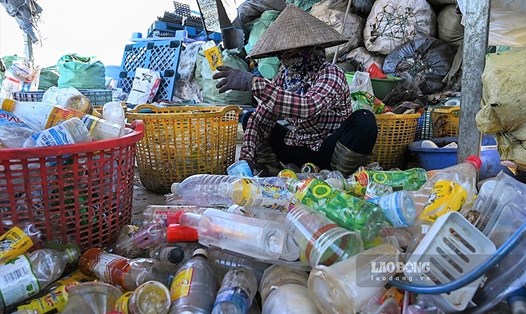With a very cheap price, under 50,000 VND, and the ability to buy hundreds of styrofoam boxes, many stores choose styrofoam boxes to store food for customers to take away, creating a current trend. It is worth mentioning that many types of cheap floating foam boxes do not meet food safety standards. These products often use recycled materials, cheap industrial colorings, and have the potential to be high in uncontrolled toxins.
Last year, reporters from Lao Dong Newspaper learned about a village with up to 800 households specializing in supplying styrofoam boxes. Here, the process of making a foam box and plastic box for food makes many people shiver. Waste from household and medical facilities, after being classified and washed, is put into handmade machines, rusted to crush. These ingredients are then poured into the oven, melted from high temperatures, creating a thick mixture. This mixture is then put into a winding machine to create plastic particles. From these plastic particles, through the production process, plastic items such as straws, foam boxes, food containers, and nylon bags will be produced.
Recently, the Food Safety Department (Ministry of Health) instructed people on how to choose and use disposable food styrofoam boxes to ensure safety and avoid affecting their health.
According to the Food Safety Department, foam boxes for food containers and preservation are widely used in the world. The foam boxes are made from Polystyrene (PS) with an air content of 95% and PS of only 5%, so they are very light. Although it is a safe material, there is a risk of affecting the health of consumers if there is a contamination of lead and cadmium from unsanitary container production materials and stopping the contamination of Styrene and Ethylbenzene due to the incorrect use of foam boxes in food containers and preservation.
In particular, foam boxes made from polystyrene (PS), when exposed to high temperatures or foods with fats and acids, will release toxic chemicals such as styrene and benzene. These substances can be absorbed directly into food, especially hot, fried, stir-fried, soup, broth...
To ensure the health of consumers when using food styrofoam boxes, the Food Safety Department guides people to only use styrofoam boxes to contain and store food with clear origin, ensuring compliance with food safety regulations.
The Food Safety Department also recommends that PS foam boxes are only used to contain and store food for foods with a temperature below 700C. Foam boxes containing food should only be used once and temporarily; do not use foam boxes to store and store food for a long time.
People should not use foam boxes containing foods and drinks that are hot, high in fat, boiled water; do not use foam boxes containing foods and sour drinks (salted melon, pickled salads mixed with vinegar, lemon juice, lemon tea...) or fat, cooking oil; do not use microwaves to heat the food contained in the foam boxes.
In the long term, there should also be more drastic solutions to reduce and limit the use of food foam boxes. International and domestic trends are gradually encouraging the shift to bio-paper boxes, sugarcane waste boxes, and safe plastic boxes to replace foam boxes. This is not only good for consumers' health but also protects the environment.











